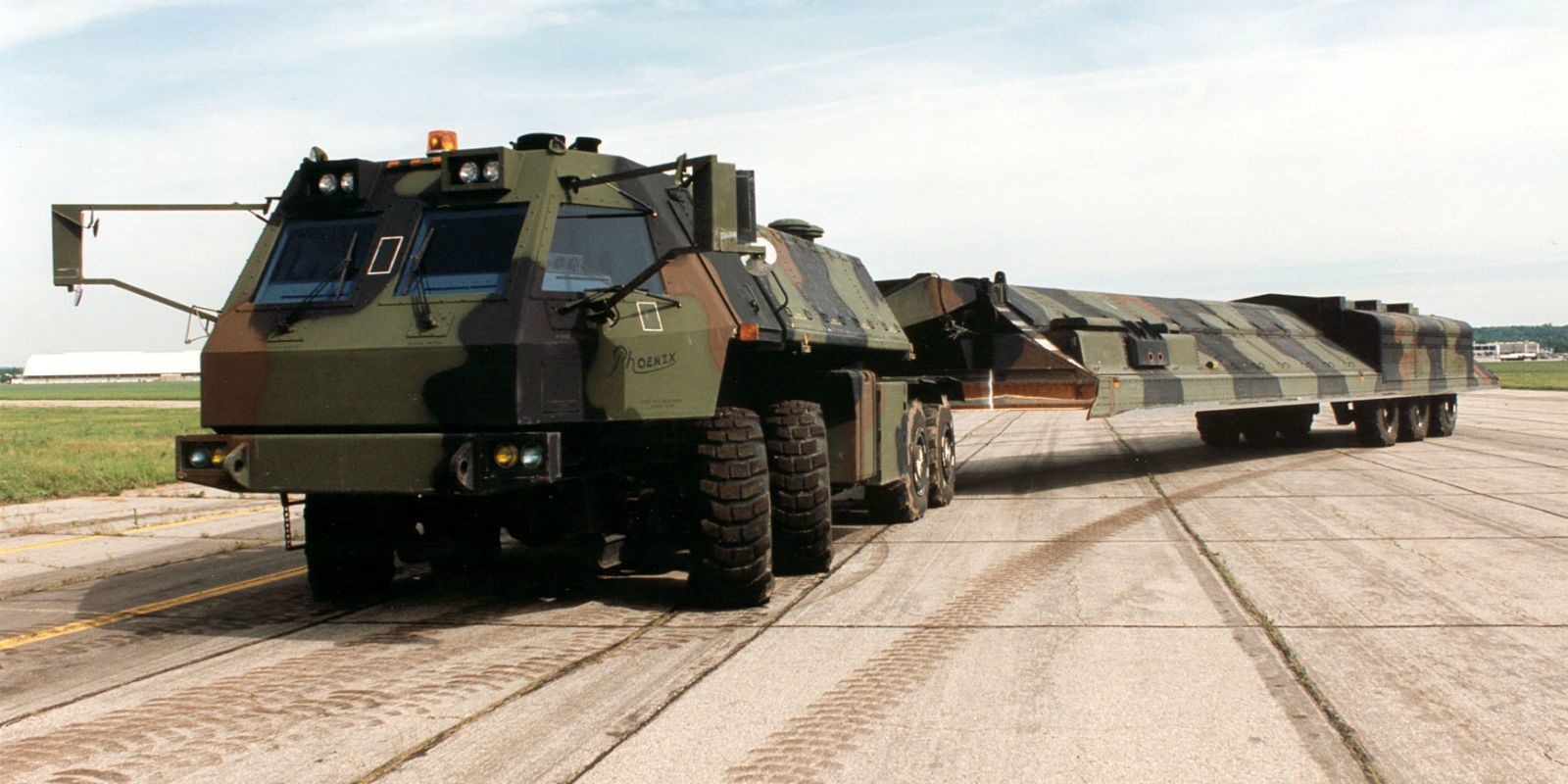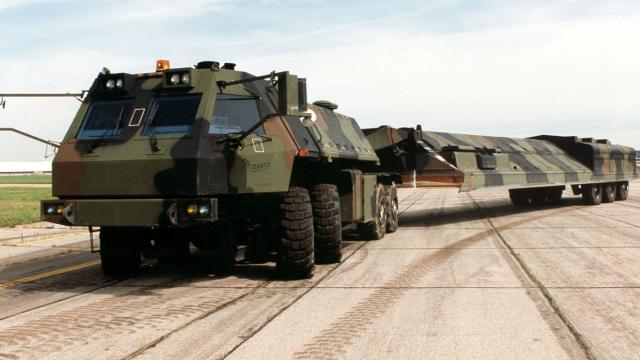The plan was simple: mount a nuclear ICBM atop a truck, then spread a bunch of them (and hundreds of decoys) out along Nevada and Utah to create a fully-mobile counterpoint to any Soviet first strike. So why did America’s Midgetman program never get off the ground?
All the nukes in America’s arsenal wouldn’t have done us a lick of good had the Soviets knocked them offline during a preemptive first strike. That’s why the US government went to such great pains defending the weapons — typically storing them in armoured subterranean silos. There were limitations to this plan, of course, as silos are only useful until they’re spotted. Once the enemy knows a silo’s location, it can easily be bombarded into oblivion. But should that silo be sitting on two axles, it can be moved from location to location as the situation dictates. So between 1986 and 1992, that’s exactly what the US Air Force tried to do — with spectacularly unsuccessful results.
The effort was essentially a response to the development of the Soviet S-24 and S-25 mobile ICBM launchers — the former ran on railroads, the latter on paved roads — which could easily be repositioned out of harm’s way in the event of attack. The US program originally aimed to make their stock of LGM-118 MX Peacekeeper and LGM-30 Minuteman ICBMs more mobile. However, the size of these weapons — each about 18m long, weighing 17,000kg, and containing up to 10 nuclear-tipped reentry vehicles — made transporting them across America’s highways nearly impossible.
As such, the Air Force went about developing a smaller version: the 4m, 14,000kg Small Intercontinental Ballistic Missile (SICBM) or MGM-135A Midgetman. It was small enough to travel on unmodified civilian roadways yet still powerful enough to ruin Moscow’s week from the other side of the Pacific. Each missile packed a 475 kt nuclear warhead and could travel up to 11,000km using internal GPS guidance.
The LGM-135As would be launched from the bed of a Hard Mobile Launcher (HML) vehicle. These trucks were “hardened” against a variety of attacks including nuclear, biological and chemical ones, and could be scrambled from any number of military bases spread through the American West at the first hint of an incoming Soviet threat. At one point the plan was to stick 200 of these things throughout Nevada and Utah, along with as many as 22 nearly-identical — but not nuclear — decoys constantly moving between as many as 4600 bases so as to fool Soviet intelligence. President Carter signed off on the initial $US95 billion (adjusted for inflation) plan in 1980, though earnest development didn’t really start until the end of President Reagan’s first term four years later.

But even in an era where money was no object so long as it hurt the Russians — a time where space-based anti-ICBM laser platforms seemed a perfectly reasonable idea — the Midgetman project was deemed too expensive to work. The trucks alone, for example, would have cost American taxpayers about $US50 billion in today’s money. The missiles themselves would likely have been even more, should the program have ever gotten out of the prototype stages. Alas, it did not.
The Midgetman did make a single successful test flight in 1991, launching from Vandenberg Air Force Base in California and intercepting a target out at the Marshall Islands. But the fall of the Soviet Union later that year effectively eliminated any need for these weapon systems and, along with many other nuclear programs of the time, the Midgetman program was cancelled in 1992.
However, there is renewed interest in mobile ICBMs. A 2011 study suggested that both China and Russia had begun redeveloping their previously-scrapped SICBM platforms. That said, a recent RAND study commissioned by the USAF itself found that the cost of developing new SICBM systems “will very likely cost almost two times — and perhaps even three times — more” that just using what we’ve already got — that’s about $US200 billion. And you thought the F-35 was a waste of money. [Defence One – Wiki – NTI – Military Standard]
